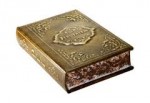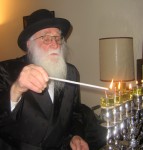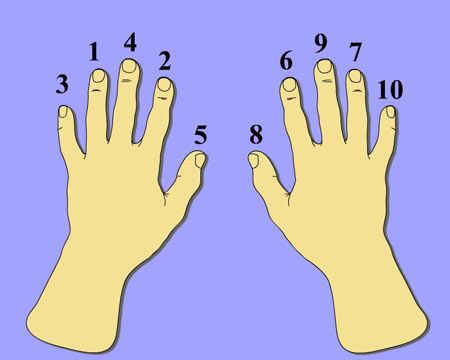 Here is the newest issue of Halachically Speaking entitled “Burial in Eretz Yisroel” offering very interesting haskofa and halacha on this topic.
Here is the newest issue of Halachically Speaking entitled “Burial in Eretz Yisroel” offering very interesting haskofa and halacha on this topic.
Personal Supplications on Shabbos and Yom Tov by Rabbi Yirmiyohu Kaganoff
By Rabbi Yirmiyohu Kaganoff (RabbiKaganoff.com)
Question # 1: Harachaman Hullabaloo
“I know that on Shabbos some people do not recite the harachamans at the end of bensching, but I was raised saying them. Am I doing something wrong?”
Question #2: The Monotonous Mishebeirach Mode
Iam Impatient calls me with the following question: “Can we do anything to reduce the number of mishebeirachs in our shul? It is taking longer and longer, and I find the delay quite disturbing.”
May I Daven in English?
By Rabbi Yirmiyohu Kaganoff (RabbiKaganoff.com)
Question #1:
I received the following e-mail question from Verna Acular:
I much prefer to pray in English, since reading the siddur in Hebrew provides me with no emotional connection to G-d. I was told to read the Hebrew even though I cannot comprehend it, yet other people I know were told that they could pray in English. Which approach is correct?
Question #2:
Bella, a middle-aged, new immigrant from Central Europe, struggles to ask the rabbi:
I became frum in Hungary and Hungarian is the only language that I can read and understand. Someone told me that now that I am living in the United States, I cannot pray in Hungarian, but must learn to read either English or Hebrew. Is this so? I am really too old to learn to read a new language.
Honor Thy Sefarim!
By Rabbi Yirmiyohu Kaganoff (RabbiKaganoff.com)
A reader recently sent me the following series of questions.
Question #1:
“My teachers taught in Day School that one may not sit on a bench while a sefer rests on it. An elderly man with whom I share a bench in shul often puts his siddur down on the bench on which we are sitting. Do I need to pop out of my seat every time he does this?”
Question #2:
“I also learned that one does not place anything on top of sefarim. Yet, even in the frummest of shuls, I see people placing their tefillin bags, watches, and eyeglasses on top of sefarim. Am I mistaken?”
Is it Time for Maariv?
 By Rabbi Yirmiyohu Kaganoff (RabbiKaganoff.com)
By Rabbi Yirmiyohu Kaganoff (RabbiKaganoff.com)
Question #1:
When is the correct time to daven maariv?
Question #2:
Why is there no repetition of shmoneh esrei for maariv?
Question #3:
Must women daven maariv?
Halachically Speaking – Secular Dates
 Here is the newest issue of Halachically Speaking entitled “Secular Dates” offering very interesting haskofa and halacha on this topic.
Here is the newest issue of Halachically Speaking entitled “Secular Dates” offering very interesting haskofa and halacha on this topic.
Halachically Speaking – When and When Not to Recite Tachnun
 Here is the newest issue of Halachically Speaking entitled “When and When Not to Recite Tachnun” offering very interesting haskofa and halacha on this topic.
Here is the newest issue of Halachically Speaking entitled “When and When Not to Recite Tachnun” offering very interesting haskofa and halacha on this topic.
When and When Not to Recite Tachnun
Should I Recite Ga’al Yisrael Aloud?
 By Rabbi Yirmiyohu Kaganoff (RabbiKaganoff.com)
By Rabbi Yirmiyohu Kaganoff (RabbiKaganoff.com)
Question #1: As a child in shul, I noticed that shortly before the Shemoneh esrei was begun, some of the older European Jews would wait before reciting the words “Shirah chadasha” until the chazzan completed the entire beracha and said “Ga’al Yisrael.” They would answer “Amen” to the chazzan’s beracha, then complete the beracha themselves and begin the Shemoneh esrei. I no longer see anyone doing this. Were they following a correct procedure?
The Text of Birchas Hagomeil
(RabbiKaganoff.com) After Eliezer’s (Eved Avraham) extensive travels through the desert, he presumably recited birchas hagomeil. Did he use the same text that we use?
Question #1: Slip up in shul
Not long ago, I received the following question in an e-mail. Upon reciting birchas hagomeil, the individual erred and recited the following:
“Hagomeil tovim, shegemalani kol tuv,” thereby omitting the word lachayavim in “Hagomeil lachayavim tovim.” Must he now repeat the bracha because he omitted a word?
Halachically Speaking – Happy Birthday!
 Here is the newest issue of Halachically Speaking entitled “Happy Birthday” offering very interesting haskofa and halacha on birthdays.
Here is the newest issue of Halachically Speaking entitled “Happy Birthday” offering very interesting haskofa and halacha on birthdays.
Vesein Tal Umatar Starts Maariv December 4th
 (Mishna Berura Yomi – Chicago Center for Chesed)
(Mishna Berura Yomi – Chicago Center for Chesed)P’sakim of HaRav Shmuel Kamenetsky, Shlita on Hilchos Chanukah
(Hakhel)
We provide the following p’sakim of HaRav Shmuel Kamenetsky, Shlita, as excerpted from the Sefer Koveitz Halachos by Rabbi Doniel Kleinman, Shlita. As with all Halacha, one should ask his own Rav or Posek for a definitive ruling in his particular case or situation:
1. Although one may not use a combination of oil and candles for his Neiros, one may use different oils on any given night, because they are considered similar enough to each other.
2. One need not use the candle that was used as the candle to light the Neiros Chanukah as his Shamash.
3. Even if the glass cups which are inserted into a Menorah cannot stand on their own because of the narrow piece of glass that fits snugly into the Menorah, one can consider the cup to still be a Kli–for it is specifically manufactured to be used in this way.
Some “Light” Chanukah Questions By Rabbi Yirmiyohu Kaganoff

Question #1: My sister invited our family for Shabbos Chanukah, and we will be sleeping at her neighbor’s house. Where do we set up the menorahs, particularly since I do not even know the neighbor?
Question #2: My husband has a late meeting at work tonight and will not be home until very late. What should we do about kindling Chanukah lights?
Question #3: I will be attending a wedding during Chanukah that requires me to leave my house well before lighting time, and I will not return until very late. Can I kindle at the wedding, just like the lighting that takes place in shul?
Question #4: I will be spending part of Chanukah in a hotel. Where should I kindle my menorah?
The Text of Birchas Hagomeil
After Eliezer’s extensive travels through the desert, he presumably recited birchas hagomeil. Did he use the same text that we use?
By Rabbi Yirmiyohu Kaganoff (RabbiKaganoff.com)
Question #1: Slip up in shul
Not long ago, I received the following question in an e-mail. Upon reciting birchas hagomeil, the individual erred and recited the following:
“Hagomeil tovim, shegemalani kol tuv,” thereby omitting the word lachayavim in “Hagomeil lachayavim tovim.” Must he now repeat the bracha because he omitted a word?
Would You Like One Day or Two?
 By Rabbi Yirmiyohu Kaganoff (RabbiKaganoff.com)
By Rabbi Yirmiyohu Kaganoff (RabbiKaganoff.com)
On the evening of the first night of Chol HaMoed in Eretz Yisroel (corresponding to the eve of the second night of Yom Tov in chutz la’aretz), I received a curious phone call:
“Rabbi,” the female voice began, “I am calling on behalf of my friend, Rivkah.” After decades of rabbinic experience, I was convinced that this was the introduction to an embarrassing question. People often prefer pretending that they are asking for someone else — hiding behind the name “of a friend.” But this time, I was wrong.
KIDDUSH OR HAVDALAH?
O-U Presents Top Consumer Questions Received for the Summer
 (O-U) Please check with your own LOR for psak on these questions:
(O-U) Please check with your own LOR for psak on these questions:
OU Kosher presents frequently asked questions to-date on the OU Kosher Hotline (212-613-8241) by consumers received for the summer. Questions may also be submitted to kosherq@ou.org.
1. Q: Can one eat in an ice cream or yogurt store product that has been scooped from a container that bears O-U certification?
A: In some instances, the OU certifies an entire store. In such cases, the OU letter of certification will state that a particular store located in a specific location is under OU supervision. Obviously, one can eat everything in a certified store. However, it is often the case that the OU certifies a brand name ice cream or yogurt, but the OU does not certify the store that sells the product, even though the store has the same brand name as the product. In this latter instance, the OU only certifies sealed containers bearing the OU symbol. Once the container is opened, the OU no longer vouches for the kosher integrity of the item, as the scoop may have been previously used for non-certified flavors.
2. Q: Can I drink coffee at a non-certified restaurant?
Halachos of The Three Weeks
 HaRav Yisroel Dov Webster, Shlita, noted Posek, Dayan–Shaarei Mishpat, and author of The Halachos of Pregnancy and Childbirth, gives a Hakhel Halacha Shiur in Boro Park. We provide below a review by Rabbi Webster of the Halachos of The Three Weeks, which begins today. As with all Halachos, in case of one’s particular circumstances, he/she should consult with their own Rav or Posek:
HaRav Yisroel Dov Webster, Shlita, noted Posek, Dayan–Shaarei Mishpat, and author of The Halachos of Pregnancy and Childbirth, gives a Hakhel Halacha Shiur in Boro Park. We provide below a review by Rabbi Webster of the Halachos of The Three Weeks, which begins today. As with all Halachos, in case of one’s particular circumstances, he/she should consult with their own Rav or Posek:
Halachos of Shiva Asar B’Tammuz
 (Hakhel)
(Hakhel)
HaRav Yisroel Dov Webster, Shlita, noted Posek, Dayan–Shaarei Mishpat, and author of The Halachos of Pregnancy and Childbirth, gives a Hakhel Halacha Shiur in Boro Park. We provide below a review by Rabbi Webster of the Halachos of Shiva Asar B’Tammuz, which begins this evening. As with all Halachos, in case of one’s particular circumstances, he/she should consult with their own Rav or Posek:
Review of Fingernail Trimming and Halacha:Kaballah
The Rema cites on Shulchan Aruch that one should not cut finger nails in the simple order of the fingers, but rather following a particular order, left hand first (Shemiras Shabbos KeHilchoso (42:46). The Arizal disagrees with this practice and others like the Maharam MiRuttenberg were not particular about this. The Aruch HaShulchan (OC260:6) writes that following the Rema does not fall in the category of halachic obligations but a higher level of carefulness. The Mogen Avrohom recommends being stringent. The Chazon Ish cites that this order would not apply to toenails. Overall most Ashkenazim are inclined to this practice so hence this post.
The following handy graphic from kitzur365.org will help to remember this order. Perhaps print this posting out, rip off the Torah portion, and keep this graphic in your bathroom.
Halachos of Sheva Brachos (Marriage Feast)
 (Hakhel)
(Hakhel)
With Chasuna (wedding) season upon us, it becomes necessary to once again review the Halachos of Sheva Brachos, so that we can be better guided when attending a Sheva Brachos Seudah, or being asked to be the “Panim Chadoshos”. We present below several such Halachos, as excerpted from the Sefer Oholei Yeshurun by Rabbi Aharon Felder, Shlita. As always, one should consult with his Rav or Posek for a final P’sak or in the case of any doubt:
1. If a Chasuna occurs near sh’kia and the meal cannot begin on the same day (before sunset), then the seven days begin on the following day (i.e. the day of the actual Chasuna meal).
Relevant and Often Forgotten Halachos for Shaliach Tzibbur
FOR THE SHALIACH TZIBBUR! We provide by the following link a concise summary of pertinent Halachos for the Shaliach Tzibbur in an attractive poster format. This was prepared by Hakhel in conjunction with The V’Ani Tefillah Foundation. All of its contents have been approved by HaRav Yisroel Belsky, Shlita.
Halachically Speaking – Happy Birthday!
 Here is the newest issue of Halachically Speaking entitled “Happy Birthday” offering very interesting haskofa and halacha on birthdays.
Here is the newest issue of Halachically Speaking entitled “Happy Birthday” offering very interesting haskofa and halacha on birthdays.
Review Your Brachos on Natural Phenomena
 (Hakhel)
(Hakhel)
As we are now into the “Natural Events” season, we provide the following pertinent Halachos relating to the Brachos on these events–which serve to remind us that they are far from being “natural”.
The basis for the Halachos below is Shulchan Aruch, Orach Chaim, Chapter 227 and the Mishna Berurah there, the Sefer Shoneh Halachos and the Sefer Piskei Teshuvos on this Chapter in Shulchan Aruch. We specifically note that one should, of course, consult with his Rav for the final Halacha. We present the following for an understanding of the issues:
1. When experiencing an earthquake, one recites the brocha of “Oseh Ma’aseh Bereishis–Who makes the work of Creation”. It is also permissible to make the brocha of “Shekocho U’Gevuraso Malei Olam–His strength and His power fill the universe”. Piskei Teshuvos writes that the degree of the tremor is not necessarily relevant, as long as it is clearly felt.
Making Our Days Count: A Review of the Halachos of Sefiras HaOmer
Rabbi Yirmiyohu Kaganoff rabbikaganoff.com
In Parshas Emor, the Torah teaches us: Hashem spoke to Moshe saying, Speak to the Children of Israel and say to them: “When you enter the land that I am giving to you and you will cut its harvesting, then you shall bring an omer-sized portion from the first of its harvest to the kohen. And he (the kohen) shall wave the omer before Hashem for your benefit, on the day after the ‘day of rest’ the kohen shall wave it… And you should count for yourselves from the day after the ‘day of rest,’ from the day you bring the omer of waving, until there will be seven complete weeks.
Halachically Speaking – Purim Costumes

Here is the newest issue of Halachically Speaking entitled “Purim Costumes”
Brachos of Fiber One, Pringles, Craisins, Corn Cakes, and Granola Bars
 (Hakhel)
(Hakhel)
It could be said that one is not intruding into the life of another if, out of care and concern, he would like to aid another perform a Mitzvah properly. As one example, we provided cases where the bracha over an item is not well known and one should feel comfortable mentioning this fact and double-checking that his fellow is about to make the correct bracha. A reader commented that the bracha on several of the foods that we noted, is in fact, the subject of dispute among authorities. Accordingly, we provide our most recent brief notes on the brachos at hand:
A. Fiber One. The OU, which gives the Hashgacha on Fiber One cereal, has determined that the proper brachos on this cereal are Mezonos and Al HaMichya. We note that the original determination as to Fiber One was that its bracha was a Shehakol, but that position changed over a year ago [we do not know whether this was due to a change in the constitution of the product].
Migdal and Magdil – What’s The Big Difference?
(Halacha For Today – Ben Olam Haba)
